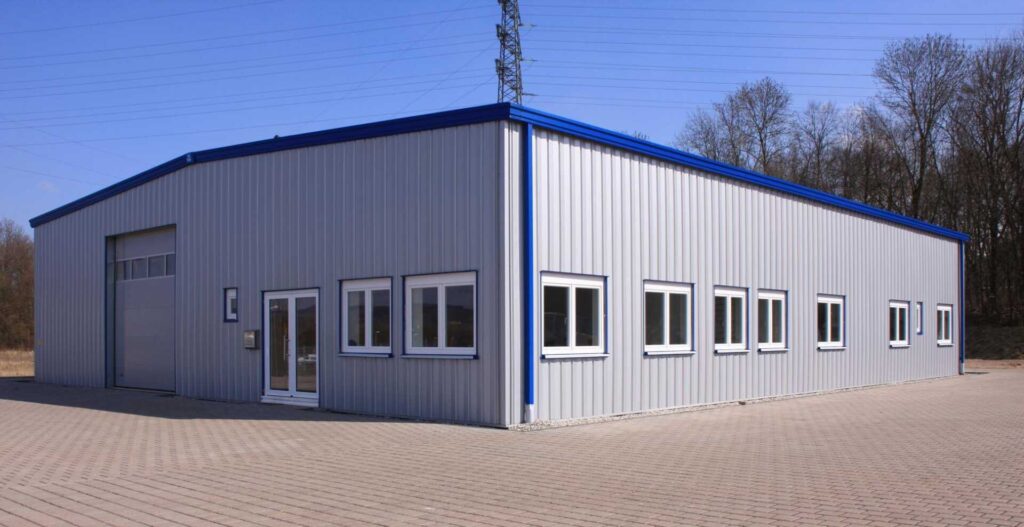
Contents
When addressing the intricacies of metal building expenses, it’s crucial to navigate through a labyrinth of factors that can greatly affect your budget. From choosing the appropriate materials to including labor costs and unforeseen charges, the procedure calls for a careful approach. As you start on this voyage of cost estimation, grasping the subtleties of each component will be the key to revealing an accurate financial prediction. So, how do you ensure a smooth and well-informed budgeting strategy for your metal building project?
Key Takeaways
- Consider factors like size, materials, location, design, and timeline.
- Understand material costs, including quality, suppliers, customization, budget, and warranty.
- Breakdown labor expenses: rates, productivity, trends, timeline, and location factors.
- Factor in equipment costs, tool expenses, rental options, and maintenance.
- Plan for permitting, inspection fees, building codes, zoning regulations, and financial preparation.
Factors Affecting Metal Building Costs
Factors that greatly influence metal building costs include the size of the structure, choice of materials, and location of the construction site. When considering the location impact, it’s important to note that areas with higher labor and material costs can notably increase the overall expense of your metal building project.
Additionally, the complexity of the design plays a vital role in determining the final cost. More intricate designs often require specialized materials and skilled labor, driving up the total expenditure.
Size considerations are another key factor affecting metal building costs. Larger structures naturally require more materials and labor, resulting in higher expenses.
Furthermore, project timeline is an important aspect to keep in mind. Rushed projects may incur additional costs due to overtime labor or expedited material delivery charges. On the other hand, a well-planned timeline can help streamline the construction process and minimize unforeseen expenses.
Understanding how location impact, design complexity, size considerations, and project timeline influence metal building costs is crucial for budgeting effectively. By carefully evaluating these factors and planning accordingly, you can ensure that your metal building project stays within budget constraints while meeting your desired specifications.
Understanding Material Costs
Exploring the breakdown of material costs is vital in gaining a detailed understanding of the expenses involved in a metal building project. Regarding material quality, opting for higher-grade materials might initially seem more expensive, but it can lead to better durability and longevity, potentially saving you money in the long run. Additionally, considering various supplier options can help you find the best deals without compromising on quality. Below is a table highlighting the significance of material quality and supplier options:
| Aspects | Importance | Considerations |
|---|---|---|
| Material Quality | High | Durability, Longevity |
| Supplier Options | Moderate | Pricing, Reputation |
| Budget Allocation | High | Balancing Quality and Cost |
| Customization | Moderate | Customized Solutions |
| Warranty | Moderate | Coverage, Terms |
Analyzing material costs meticulously allows you to make informed decisions regarding your metal building project. By carefully evaluating the balance between material quality and supplier options, you can ensure that your project meets both your budgetary requirements and quality standards. Remember, the materials you choose will directly impact the overall integrity and aesthetics of your metal building, so it’s crucial to weigh your options thoughtfully.
Labor Expenses Breakdown
When it comes to metal building costs, understanding the breakdown of labor expenses is essential.
You’ll explore labor rates overview and the various factors that can impact these costs.
This breakdown will provide you with a detailed understanding of how labor expenses contribute to the overall cost of your metal building project.
Labor Rates Overview
Understanding the breakdown of labor expenses is vital when evaluating metal building costs. Labor productivity plays a pivotal role in determining the overall expenses of a project. Efficient labor practices can help reduce costs by completing tasks on time, while inefficiencies can lead to increased expenses. Monitoring labor productivity trends and implementing strategies to enhance efficiency can positively impact the bottom line of a metal building project.
Wage trends are another significant factor to consider when analyzing labor rates. Keeping abreast of current wage trends in the construction industry can help in estimating labor costs accurately. Factors such as market demand, skill level required, and geographical location can influence wage trends.
Factors Impacting Costs
To understand the breakdown of labor costs in metal building projects, it’s important to analyze the various factors that impact expenses. The construction timeline plays an essential role in determining labor costs. Projects with tight deadlines may require additional workers or overtime, leading to a significant increase in labor expenses. Efficient project management and scheduling can help maximize labor costs by ensuring that resources are used effectively within the allocated time frame.
Location factors also heavily influence labor expenses in metal building projects. Factors such as site accessibility, local labor rates, availability of skilled workers, and proximity to suppliers can all affect labor costs. Remote locations may incur higher labor expenses due to transportation costs and limited workforce availability, while urban areas with a higher cost of living may result in increased wages for workers.
Understanding these location-specific factors is crucial for accurately estimating and managing labor expenses in metal building projects. By carefully considering these factors, you can better control and budget for labor costs throughout the project.
Equipment and Tool Costs
Consider the necessary gear and tools needed for your metal building project, making sure you have all the essential resources for efficient construction. Tool upkeep expenses are a crucial aspect to factor into your budget. Regular maintenance of tools like drills, saws, and welding equipment is vital to keep them in prime condition throughout the project. By budgeting for maintenance, you can prevent unforeseen breakdowns and delays during construction, ultimately saving you time and money in the long term.
When evaluating your tool needs, explore tool rental options as a cost-efficient solution. Renting specialized tools that you may not use frequently can be more budget-friendly than purchasing them outright. Look for reputable rental companies that offer well-maintained equipment to ensure smooth operations on your construction site. Additionally, renting tools eliminates the need for long-term storage, saving you space and maintenance costs when the tools aren’t in use.
It’s important to create a detailed list of all the tools and equipment needed for your metal building project. By carefully considering tool upkeep costs and exploring rental options, you can effectively manage your equipment expenses and achieve a successful construction process.
Be proactive in maintaining your tools, and consider renting as a practical alternative to purchasing expensive equipment outright.
Permitting and Inspection Fees
When considering metal building costs, you should first look at the Permit Application Process, Inspection Requirements, and Fee Structure Breakdown.
Understanding the steps involved in obtaining permits, meeting inspection standards, and the breakdown of associated fees is essential for budgeting accurately. Each facet plays a significant role in the overall cost management of your metal building project.
Permit Application Process
Understanding the permit application process for metal buildings involves carefully maneuvering the complexities of permitting and inspection fees. When navigating this stage, keep in mind the following key points:
- Building Codes: Familiarize yourself with the specific building codes applicable to your area. These codes dictate the standards and requirements your metal building must meet for safety and compliance.
- Zoning Regulations: Understand the zoning regulations in place to determine if your proposed metal building aligns with the designated land-use requirements. Zoning regulations control where certain types of structures can be built within a given area.
- Permitting and Inspection Fees: Be prepared for the financial aspect of the permit application process. Factor in the costs associated with obtaining permits and scheduling necessary inspections, as these fees can vary based on the size and scope of your metal building project.
Inspection Requirements
Fulfilling inspection requirements is an important step in the permit application process for metal buildings, confirming compliance with safety standards and regulations. The inspection process involves a thorough review of the structure’s design, materials, and construction methods to verify that they meet the necessary codes and guidelines.
To estimate the costs associated with inspections, consider factors such as the size and complexity of the building, the number of inspections required, and any additional tests or certifications needed. Utilizing cost estimation techniques like comparing quotes from different inspection agencies or consulting with experienced builders can help you budget effectively for these expenses.
Additionally, staying informed about the specific inspection requirements in your area and establishing a clear timeline for completing inspections can streamline the process and prevent delays in your construction project. By proactively managing inspection requirements, you can confirm that your metal building meets all necessary standards and is safe for occupancy.
Fee Structure Breakdown
A breakdown of the permit and inspection fee structure is essential to understanding the financial requirements associated with your metal building project. When budgeting for these costs, it’s important to consider the following:
- Fee Structure Variations:
Permitting and inspection fees can vary significantly depending on your location, the size of your project, and the complexity of the building design. Researching the specific fees in your area will help you anticipate these costs accurately. - Hidden Costs:
Apart from the obvious permitting and inspection fees, there may be additional hidden costs, such as re-inspection fees or fees for expedited services. Make sure you account for these potential extras in your budget to avoid surprises later on. - Negotiating Fees and Budgeting Strategies:
Don’t hesitate to negotiate fees with local authorities or inspectors, especially if you believe certain charges are unreasonable. Additionally, implementing effective budgeting strategies, such as setting aside a contingency fund, can help cushion any unexpected fee increases during the construction process.
Foundation and Site Preparation
When preparing the site for a metal building, it is important to assess the soil conditions and plan the foundation accordingly. Soil testing is vital to determine the load-bearing capacity of the ground and ensure a stable foundation for your structure. Additionally, taking into account drainage is essential to prevent issues such as water accumulation around the building, which can lead to erosion and structural damage over time. Proper planning in these areas can save you significant costs and headaches down the road.
To illustrate the significance of soil testing and drainage considerations, the table below outlines key factors to keep in mind during the foundation and site preparation phase:
| Aspects to Keep in Mind | Description |
|---|---|
| Soil Testing | Conduct tests to assess soil composition and strength. This helps determine the type of foundation needed. |
| Drainage Planning | Evaluate the site’s natural drainage patterns and plan for effective water runoff to prevent flooding and erosion. |
| Foundation Type | Choose the appropriate foundation type based on soil test results and building requirements. Options include slab-on-grade, pier, or strip foundations. |
| Grading and Leveling | Ensure the site is properly graded and leveled to provide a stable base for the building and facilitate water drainage. |
| Erosion Control | Implement erosion control measures to protect the site during and after construction, such as retaining walls or vegetation barriers. |
Customization and Design Upcharges
When considering metal building customization and design upcharges, it’s important to understand that various design options can significantly impact the overall cost.
Incorporating custom features into your metal building can also result in extra expenses.
It’s vital to carefully evaluate the design elements you desire to make sure they align with your budget constraints.
Design Options Impact
Customizing your metal building design can have a significant impact on the overall cost due to the various design upcharges associated with specific features and modifications. When pondering design options, bear in mind the construction timeline and how each customization may affect the project’s schedule.
Here are some key points to keep in mind:
- Architectural Complexity: Elaborate designs like curved walls or unique roof structures can add intricacy to the construction process, potentially extending the timeline and increasing costs due to the specialized labor required.
- Material Selection: Opting for high-quality materials or finishes can enhance the aesthetic appeal of your metal building but may come at a higher price point. Balancing customization desires with budget constraints is important in determining the right mix of materials for your project.
- Structural Modifications: Altering the standard dimensions or load-bearing capacity of the building can lead to additional engineering expenses and potential delays, as the design must be carefully recalibrated to ensure structural integrity within your customization parameters.
Custom Features Costs
Consider the impact of custom features costs, including customization and design upcharges, on your metal building project budget. When planning for interior finishes costs, keep in mind that specialized features such as high-end flooring, custom cabinetry, and unique lighting fixtures can significantly increase expenses.
Opting for luxurious finishes may enhance the aesthetics of your metal building but can also add substantial costs to your overall budget. Similarly, exterior finishes expenses shouldn’t be underestimated. Factors such as premium cladding materials, intricate architectural details, and custom paint finishes can all contribute to higher expenditures.
It’s vital to balance your desire for custom features with your budget constraints to ensure that your metal building project remains financially viable. By carefully evaluating the costs associated with customization and design upcharges, you can make informed decisions that align with your budgetary needs while still achieving the desired aesthetic and functionality for your metal building.
Energy Efficiency Investments
Investing in energy-efficient features for your metal building can lead to substantial long-term cost savings and environmental benefits. When considering green building and eco-friendly design options, here are three key investments that can make a significant impact:
- High-Quality Insulation: Proper insulation helps regulate the temperature inside your metal building and reduces the strain on heating and cooling systems. By investing in quality insulation materials, you can lower your energy consumption and decrease utility costs over time.
- Energy-Efficient Lighting: Switching to LED lighting fixtures can greatly reduce electricity usage compared to traditional lighting options. LED lights aren’t just more energy-efficient and have a longer lifespan, reducing maintenance costs in the long run.
- Solar Panels: Installing solar panels on the roof of your metal building can harness renewable energy and lower your reliance on the grid. While the initial investment may be higher, solar panels can pay for themselves through reduced energy bills and potential tax incentives.
Maintenance and Repair Budgeting
When planning the long-term financial sustainability of your metal building, allocating a budget for maintenance and repair is essential to ensure the structural integrity and functionality of the structure.
To effectively manage this aspect, consider dividing your maintenance budget into two main categories: preventative maintenance and emergency repairs.
Preventative maintenance involves scheduled inspections and routine tasks aimed at identifying and addressing potential issues before they escalate. This proactive approach helps extend the lifespan of your metal building and reduces the likelihood of unexpected breakdowns.
Examples of preventative maintenance activities include regular roof inspections, checking for corrosion, lubricating moving parts, and inspecting electrical systems.
On the other hand, emergency repairs are unforeseen issues that require immediate attention to prevent further damage. While it’s difficult to predict when emergency repairs will be needed, having a separate budget set aside for such contingencies is vital.
This emergency fund can cover sudden leaks, structural damages, or unforeseen equipment failures.
Budgeting for Future Expansions
Planning for future expansions of your metal building involves strategically allocating financial resources to accommodate potential growth and enhance the overall functionality of the structure. Expansion planning is essential to ensure your building can adapt to your business’s evolving needs.
Here are some key points to take into account when budgeting for future expansions:
- Growth Projections: Begin by analyzing your business’s growth forecasts for the upcoming years. Understanding how your operations may evolve will help you determine the extent of the expansion needed. Take into consideration factors such as increased production capacity, additional storage requirements, or the need for more office space.
- Financial Planning: Develop a thorough financial plan that accounts for the costs associated with expanding your metal building. This plan should include not just the construction expenses but also any additional equipment, utilities, and maintenance costs that may arise due to the expansion. Make sure that your budget is adaptable enough to accommodate unforeseen expenses that may arise during the expansion process.
- Future Costs: Foresee future costs beyond the initial expansion phase. Factor in expenses related to ongoing maintenance, repairs, and potential upgrades as your business continues to grow. By budgeting for future costs now, you can avoid financial strain later on and make certain that your metal building remains a valuable asset for years to come.
Wrap-Up
As you navigate the intricate web of metal building costs, remember that each dollar spent is a stepping stone toward your vision.
Just as the sturdy pillars of a metal structure support its framework, your budget is the foundation for your project’s success.
By meticulously analyzing every aspect and making informed decisions, you’re laying the groundwork for a durable and efficient construction process.
Stay vigilant, stay focused, and watch your dreams rise like a shining beacon of possibility.
Recent Posts
Benefits of Using Metal in Construction Projects
Isn’t it fascinating how a simple material can transform the landscape of construction? When you
What Are the Benefits of Durable Metal Construction?
While traditional building materials may offer charm, they often fall short in durability compared to
Benefits of Choosing Strong Metal for Construction
When it comes to bolstering your construction projects, opting for strong metal for construction can




